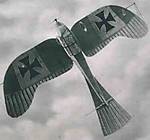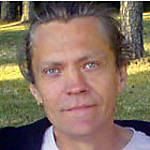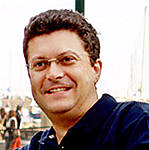Thanks guys for your kind words.
The wood grain inside the fuselage was achieved by firstly painting two coats of Gunze Radome. Once this was fully dry I used a combination of Burnt Sienna, Burnt Umber and Raw Sienna artists oil paints. Using a small stiff brush I dragged the paint down making sure not to add too much paint at one time. Keep going over your work until you have achieved the desired look. I don't drag the brush in straight lines, I think it looks better if the grain is a little wavy. If the paint is on a little thick in some spots, simply wipe your brush on a paper towel and drag over the area that needs thinning, it's a lot of trial and error but oils are so forgiving, if you don't like the result just wipe it off and start again.
To make the knots, get a very small brush and dab the area you want the knot, wipe the brush to stop a build up of paint. Once you have a tiny spot which is a different colour to the rest of the panel (nearly back to the base coat), drag your stiff brush down and go around the area you have been dabbing, you should end up with a knot.
Let the oil paint dry for at least 4 days then overcoat with a clear finish, I use Humbrol Matt Cote, The one in the bottle not the tinlet.
The colour of the wood you want to simulate depends entirely on the base coat and the oil coat, on my latest build, the WNW Bristol, I needed a much lighter colour for the cockpit floor and instrument panel so I base coated again with Gunze Radome but this time I used very thinned Raw Sienna oil paint, the result is a totally different colour to the Junkers.
I use the same technique for doing the struts and props, also the tail skids. Drying time is the biggest issue with oils but I always have plenty of other things to go on with while the paint is drying.
To make the brass instruments, I use brass tube of different diameters. I cut the tube to short lengths then find one the correct size for the outside of the instrument. I then slide another cut tube which is a neat fit inside the first tube, I push it through until it is just a little further then the first tube creating a small lip, a drop of CA holds it all together. Lightly sand the edges of the cut brass tube to give it a slightly rounded look. I then find a piece of plastic rod which fits neatly inside the second tube, push it in (from the back) but only about half way, this allows your instrument decal to be recessed, again, a drop of CA then trim the back of the instrument of any excess plastic rod. Cut your instrument decal to fit inside the brass tube (I normally file a piece of the brass tube to make a wad punch, I use it to cut the decal which makes for a perfecr fit inside the tube), once dry, add a few drops of Futures to simulate the instrument glass. It might all sound a bit complicated but in practice it is very easy.
Hope this gives you a few ideas.
Des.






















































